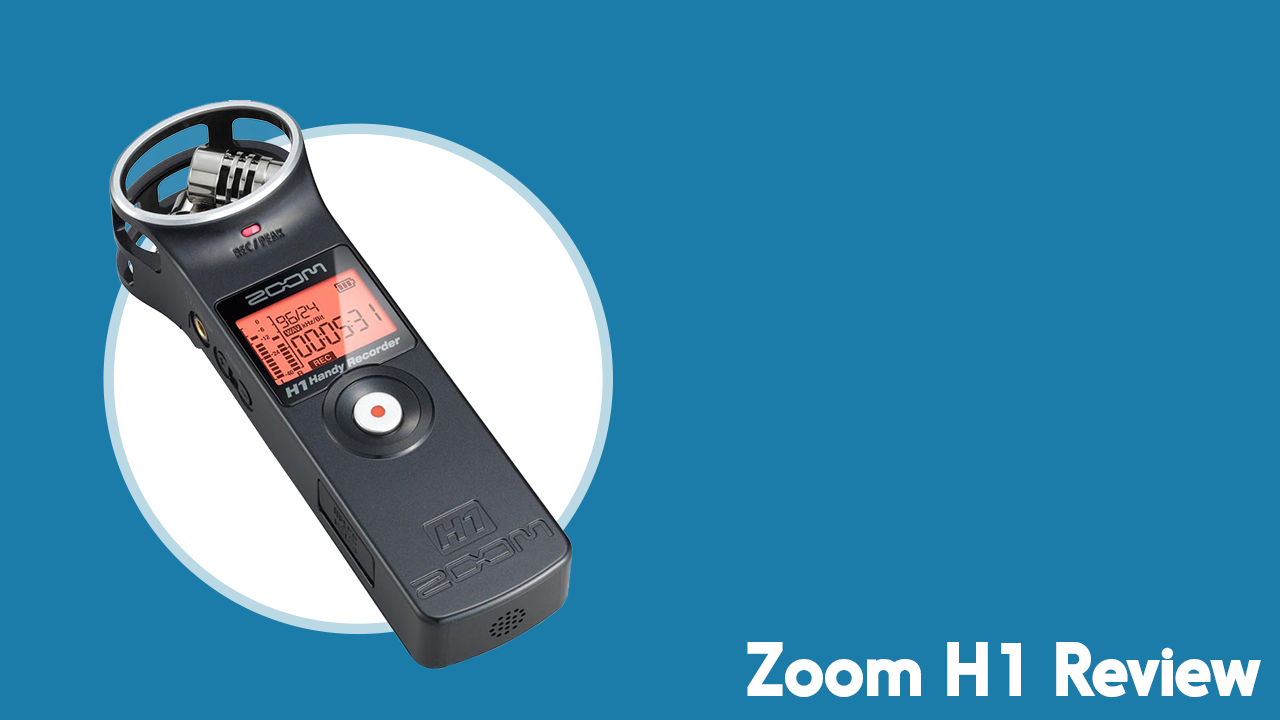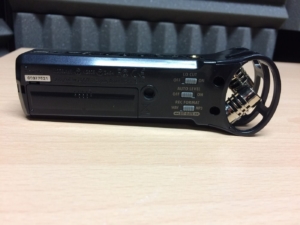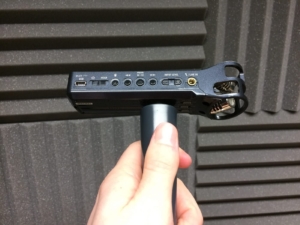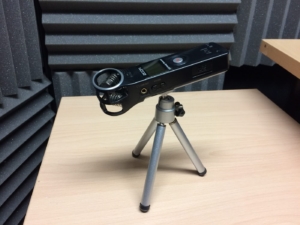Zoom H1 Review: The Extra-Mobile Digital Recorder

Zoom’s H1 Handy Recorder is the smallest (and cheapest – $100/£80) in the well respected Zoom recorder family. Whilst Zoom has beefed up their newer models over the recent years with many more features, this comes at a cost – their size. But, the H1 literally fits in your pocket. It’s no bigger than many modern smartphones, in fact.
Of course, size isn’t everything, so is it a worthwhile bit of gear to add to your podcasting arsenal?
Who Would Use The Zoom H1?
The H1 is a versatile recorder used by musicians, journalists, filmmakers, podcasters, and basically anyone who needs to record audio on a regular basis. In podcasting, its size and portability make it ideal for on-the-go recordings, so if you do a lot of face to face interviews or location recordings (at events or conferences) then it could be a great asset.
You’ll often see Zoom H1s attached to video cameras as a replacement for the default sound offered by these devices. They can mount directly onto things like DSLR cameras, mic stands, and tripods via the small threaded hole on the back of the recorder.
The ‘auto-gain’ setting (which prevents overload and distortion) is a handy tool to have if you’re in an area with unpredictable noise levels, but try to set your input level manually whenever possible. This will give you a more consistent sound and make it much easier for you in the editing stages.
Where Would You Use The Zoom H1?
Though it is every bit as handy to have one around your home studio, the H1’s functions are best utilised playing the ‘studio in your pocket’ role. It only takes a single AA battery to power the recorder (which can give up up to 10 hours operating time) and you can take it anywhere you need to.
There’s a great low cut filter switch on the recorder that you can turn on to help minimise unwanted sounds with low frequencies. Most commonly, this might be plosives (someone popping the mic), but if you’re recording outside this can come in really handy for dealing with wind noise. Try not to rely on this alone though. Like any mic, wind distortion will still be picked up by anything more than a gentle breeze, so use sheltering techniques, or a foam/furry windjammer to further protect your recordings against this.
I like the external buttons on the recorder which allow you to alter a lot of settings without having to go into a digital menu. If you’re on the move or in a hurry this can be really convenient. It also means the H1 is a lot less intimidating to work with for the first time if you’re new to audio recording.
You can also play back and listen to your recording directly from the H1 itself which means you can immediately check it after you’re done.
What Kind Of Recording Setup Suits The Zoom H1?
You have two main options here. You can use the built in microphones (an X & Y stereo pair) which, on their own, are of a really good quality. The H1 also has an input (3.5mm) which allows you to introduce an external mic. If you have the budget for external mics, we’re a big fan of lavalier mics for face to face interviews and the H1 is a great affordable option for building this setup.
You can hold the H1 in your hand, mount it on a stand or tripod, or even attach a microphone handle and hold it that way. It’s a very versatile recorder.
As always, I recommend using a pair of earbuds to monitor your recording during a conversation or interview. That way you can recognise potential issues immediately (the recorder can be susceptible to mobile phone interference, for example) and correct them.
How Much Does It Cost?
To buy a new Zoom H1 you’re looking at around $100 or £80. That’s more than enough to get you started on its own, but throw in another $50/£45 and you can get yourself a splitter and two lavalier mics to create a really good face to face interview kit.
What Does It Come With?
As standard, a 2GB MicroSD card, one AA battery, and the Steinberg WaveLab LE audio software. It’s worthwhile looking for the optional extras bundle, though, where you’ll get a windjammer, AC adapter (USB type), USB cable, adjustable tripod stand, padded shell case, and mic clip adapter.
Zoom H1 Sound Sample
The sample below was recorded directly into the Zoom H1’s built in microphones.
This sample was recorded with two ATR3350s through a Belkin five way splitter.
The Summary
The Zoom H1 is affordable, portable, and versatile. If you’re on a tight budget and looking for a quality digital recorder then there really is no better option, for me.
If you want to use XLR microphones to record then you’ll want to check out something like the H1’s bigger cousin, the H5. If you’re more intent on keeping your kit to a small, minimalist size however, go for the H1. You can still throw in a couple of lav mics to give you more flexibility, without weighing yourself down in gear. Finally, if you’re interested in our thoughts on other digital recorders, check out our Best Digital Recorders article.
Interested in reading our other podcasting mic and equipment reviews? Check out our full podcast equipment guide. And please do suggest any piece of kit you’d like us to review in the future.



